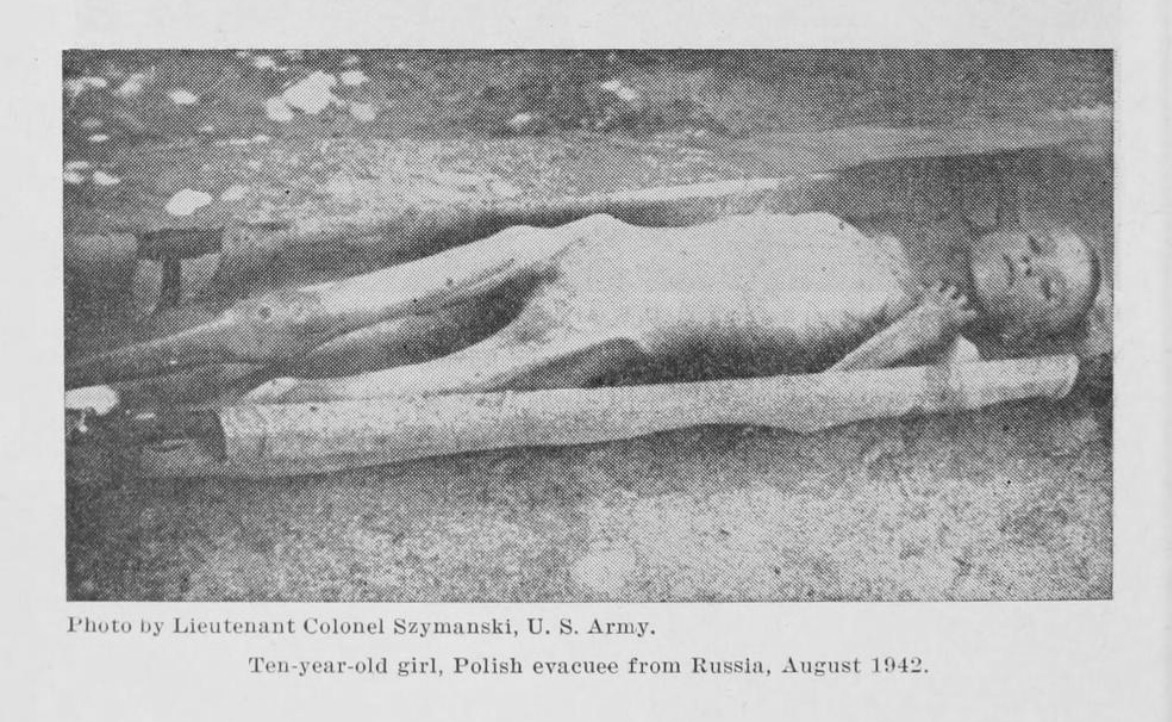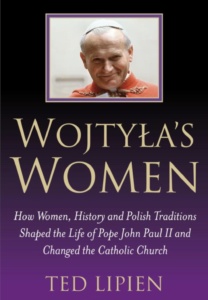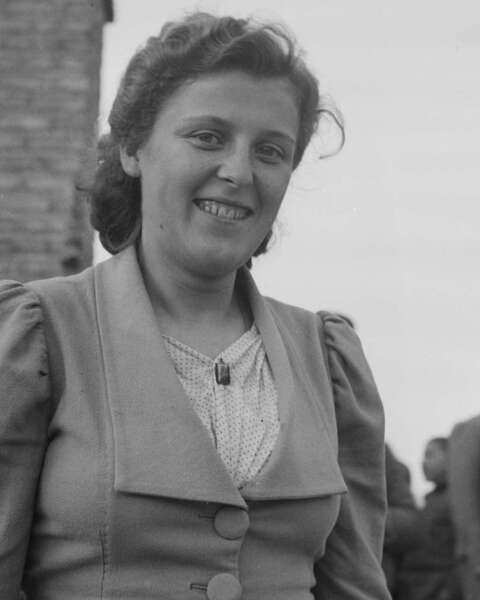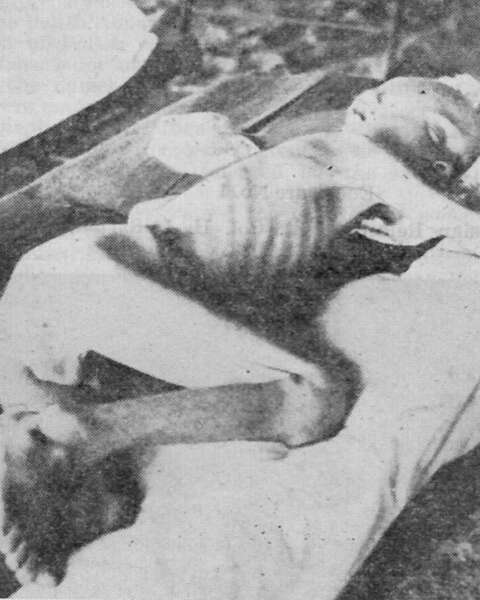By Ted Lipien
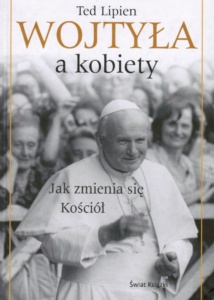
In my book, Wojtyła’s Women: How They Shaped the life of Pope John Paul II and Changed the Catholic Church, I describe how future Pope John Paul II, whom I had interviewed in Washington D.C. for the Voice of America (VOA) in 1976 when he was Kraków’s Archbishop, became familiar with many stories of immense suffering of Polish women under both Nazi and Soviet occupation.[ref]Lipien, Ted (Tadeusz Lipień). Wojtyła’s Women: How They Shaped the life of Pope John Paul II and Changed the Catholic Church, Winchester, UK: O Books, 2008. Lipien, Ted. Wojtyła a kobiety: Jan zmienia się Kościół. Warszawa: Świat Książki, 2010.[/ref]
One of the Polish “Unconquered Soldiers” of the anti-Nazi and later anti-Communist resistance, was a lieutenant in Armia Krajowa (Home Army) Alina Gryglowska (also known as Alojza Stanisława Gryglowska-Kot and under “Maryla” nom de guerre in the Home Army underground), whom Cardinal Karol Wojtyła had met in Kraków and encouraged to write a book about her deportation to forced slave labor Gulag camps in the Soviet Union. Hundreds of thousands of Poles were deported to the Gulag after the Soviet Union invaded and occupied eastern Poland in September 1939 under the secret terms of the Hitler-Stalin Pact. Alojza Gryglowska was not one of them. She took part in the anti-Nazi resistance as a trainer of Armia Krajowa women fighters in the German occupied part of Poland and was arrested in Kraków and sent to the Gulag by the Soviet NKVD secret police in March 1945. She was part of the second, much smaller wave of post-war deportations, which still produced many deaths among men and women. Many of the earlier victims of Soviet Communist genocide were Polish children and the elderly who were the least able to withstand the inhuman conditions of their imprisonment. The photo of a ten-year-old Polish girl near death from malnutrition, which was taken in 1942 by a U.S. Army photographer after some of the wartime prisoners were evacuated from Russia to Iran, was classified as secret by the Roosevelt administration to protect Stalin from embarrassment. Such photos and documents relating to Communist atrocities were not declassified by the U.S. government until the early 1950s.
To this day, experiences of Polish women who went through the Soviet Gulag are still rarely told as most of them have died without writing or recording their memoirs. Some of the children of the Polish Gulag prisoners and their grandchildren are publishing books and producing film documentaries based on family documents and photographs, but there is still very little public awareness in America about 20th century Communist crimes in the Soviet Union and in Eastern Europe. Communists and their supporters have avoided legal and even moral condemnation thanks to their own skillful manipulation of media and public opinion. Unlike many Nazi war criminals, very few Communists responsible for state-sanctioned torture of prisoners and mass murders were ever brought to trial. When the stories of Gulag survivors could have had an immediate impact if told during and right after World War II, many of them felt discouraged or unable to share their experiences with journalists. They could not publish anything critical of Russia in Communist-ruled Poland, but Communists and Soviet sympathizers in the United States also did their best to present opponents of Communism as Fascists and to cast doubt on anything they would say about the Soviet Union. Corrupted by Soviet disinformation, some left-leaning Western journalists and intellectuals viewed anti-Communist East European refugees with considerable suspicion while accepting the word of Soviet propagandists and Moscow’s agents of influence at face value. To the horror of such Russian Gulag survivors as Nobel Prize writer Alexandr Solzhenitsyn, Soviet propaganda and parts of Western media made American Communist Angela Davis, future Communist Party USA vice-presidential candidate in 1980 and 1984, into a symbol of Capitalist oppression while an average American would not be able to name a single woman among millions killed or worked to death as Stalin’s slave laborers in the Soviet Union.[ref]See: Ted Lipien, “SOLZHENITSYN Target of KGB Propaganda and Censorship by Voice of America,” Cold War Radio Museum, November 7, 2017, http://www.coldwarradiomuseum.com/solzhenitsyn-target-of-kgb-propaganda-and-censorship-by-voice-of-america/[/ref] With the exception of Radio Free Europe, Radio Liberty and a few conservative media outlets, it was a major failure of American journalism, most book publishers and Hollywood film studios.
In 1976 when I recorded my interview with Cardinal Wojtyła, the Voice of America was allowed to mention Soviet wartime and post-war atrocities, but not in any great detail. At that time, even Cardinal Wojtyła was not free to make a direct public statement on the topic of Soviet crimes against Poles, but he was already able to deliver a strong pro-human rights message without being specific. [ref]”Voice of America Interview with Future Pope,” Cold War Radio Museum, October 16, 2016, http://www.coldwarradiomuseum.com/voice-of-america-interview-with-future-pope/.[/ref] In his case, an open condemnation of the Soviet Union at that time would have brought unacceptable reprisals against the Catholic Church in Poland. The Voice of America did not face such risks, but even as late as the 1970s, VOA’s senior management did not encourage the Polish Service to do interviews and reports on the suffering of Polish women and children in the Soviet Gulag. Such news was previously completely suppressed and substituted during World War II in early VOA broadcasts with Soviet propaganda. Even for a few years after the war, the U.S. government radio broadcasting station generally avoided focusing on the topic of Polish wartime prisoners in the Soviet Union.
Fortunately, Radio Free Europe (RFE), also funded by American taxpayers and broadcasting in Polish since 1952 from its headquarters in Munich, West Germany, did much more extensive and honest reporting on what went on in the Soviet Gulag and behind the Iron Curtain. There were also periods when the Voice of America offered more detailed programming on Stalin’s crimes, especially after coming under heavy criticism from the U. S. Congress in the early 1950s, but in later years limited censorship resumed in order not to provoke the Kremlin and interfere with the policy of detente toward the Soviet Union. These restrictions on VOA, which Radio Free Europe managed to avoid, were finally lifted during the Reagan administration.
After World War II, Western media in general said very little on the topic women prisoners in the Gulag. American Communists and Soviet sympathizers who were in charge of the Voice of America radio broadcasts during World War II had started the trend of covering up Stalin’s crimes and repeating Russian propaganda lies.[ref]See Ted Lipien, “Polish refugee woman from Russia as seen in American,” Silenced Refugees, January 13, 2019, http://www.silencedrefugees.com/story-of-a-polish-refugee-woman-from-russia/.[/ref] The impact of the initial silence about the suffering of Polish women and children in Soviet captivity was still felt in the United States and Western Europe in the 1970s.
During the war, Stalin’s admirers in the Roosevelt administration, including officials in the Office of War Information (OWI), which produced VOA broadcasts, engaged in illegal censorship of Polish-American radio stations and newspapers which were one of the few media sources providing truthful news about crimes of genocide against the Poles and various other nationalities and groups in the Soviet Union. While OWI officials tried to interfere with the work of independent journalists, VOA journalists spread Soviet propaganda.
Several members of Congress of both parties, most of them Republicans but also a few Democrats, some Polish Americans but also others, tried to expose Soviet crimes and the work of Russian agents of influence in the United States, including government employees of the Office of War Information where VOA radio broadcasts originated, but these efforts produced only limited results during the war.[ref]The bipartisan Select Committee to Conduct an Investigation and Study of the Facts, Evidence and Circumstances of the Katyn Forest Massacre, also known as the Madden Committee, said in its final report issued in December 1952: “In submitting this final report to the House of Representatives, this committee has come to the conclusion that in those fateful days nearing the end of the Second World War there unfortunately existed in high governmental and military circles a strange psychosis that military necessity required the sacrifice of loyal allies and our own principles in order to keep Soviet Russia from making a separate peace with the Nazis.” The committee added: “For reasons less clear to this committee, this psychosis continued even after the conclusion of the war. Most of the witnesses testified that had they known then what they now know about Soviet Russia, they probably would not have pursued the course they did. It is undoubtedly true that hindsight is much easier to follow than foresight, but it is equally true that much of the material which this committee unearthed was or could have been available to those responsible for our foreign policy as early as 1942.” The Madden Committee also said in its final report in 1952: “This committee believes that if the Voice of America is to justify its existence, it must utilize material made available more forcefully and effectively.” A major change in VOA programs occurred, with much more reporting being done on the investigation into the Katyń massacre and other Soviet atrocities, but later some of the censorship returned. Radio Free Europe (RFE), also funded and indirectly managed by the U.S., never resorted to such censorship, and provided full coverage of all communist human rights abuses. See: Select Committee to Conduct an Investigation and Study of the Facts, Evidence and Circumstances of the Katyn Forest Massacre, The Katyn Forest Massacre: Final Report (Washington: United States Government Printing Office, 1952), 10-12. The report is posted on the National Archives website: https://archive.org/details/KatynForestMassacreFinalReport.[/ref]
The Roosevelt administration promoted the image of Stalin as a radical supporter of democracy and pretended that Soviet human rights atrocities were not happening. Howard Fast, a Communist sympathizer and from 1944 to 1956 or 1957 a member of the Communist Party USA, who wrote VOA news broadcasts in 1942-1943, rejected news about Stalin’s crimes as “anti-Soviet and anti-Communist propaganda,” and did not report it. He used instead information obtained from the Soviet Embassy in Washington.[ref]Fast, Howard. Being Red. Boston: Houghton Mifflin Company, 1990.[/ref] Fast was also a best-selling author. His historical novels were published and promoted in the Soviet Union.
In addition to misleading foreign audiences about the true nature of the Soviet totalitarian regime, the Roosevelt administration also propagandized to and lied to Americans through the Office of War Information. In meetings with Polish American leaders, President Roosevelt deceived them about the deals he had made with Stalin. His wife, First Lady Eleanor Roosevelt, refused a request from Polish women to intervene with the Soviet dictator to help them find their husbands missing in Russia. Even if she had done anything more than to send the pleas from Polish women back to the State Department, the Polish military officers were already dead, having been executed on Stalin’s orders, but her direct intervention could have been a warning to Stalin. President Roosevelt and his wife would not dare to do anything to offend the Soviet ally in the war against Nazi Germany. The Roosevelt administration would not allow any media publicity in the United States or abroad about Stalin’s crimes.
What Karol Wojtyła learned in Poland after the end of World War II was that many Polish women had lost their children in Soviet prisons and work camps, where they delivered their babies under terrible conditions. Russian, Ukrainian, Jewish women, as well as women of many other nationalities, experienced a similar fate. While Soviet prison and camp commanders did not order killings of babies, many infants were born dead or died shortly after birth due to insufficient food and medical care. In some cases, the Soviet authorities also separated Polish mothers from their children, sending the children to orphanages to be brought up as Soviet citizens. Russian children, whose mothers were accused of crimes against the state, suffered a similar fate. Especially horrific were the stories of mothers who gave birth in prisons and camps and whose children died shortly after birth.[ref]For accounts of the treatment of women in Soviet Communist prisons and camps during World War II see Helena Sikorska with a preface by T.S. Eliot, The Dark Side of the Moon (London: Farber and Farber, 1946), 86-87.[/ref] Many of these women became mentally ill, some committed suicide and others were psychologically scarred for the rest of their lives. Karol Wojtyła was familiar with many of these stories and they had a definite influence on the development of his view on women, abortion and birth control.
One Polish woman who was jailed in a Soviet prison camp in Central Asia and survived was Mrs. Alina Alojza Stanisława Gryglowska, a high school teacher whom Wojtyła met in Kraków in the 1960s.[ref]A listing of Alojza Gryglowska’s memoir can be found in the KARTA Foundation Archive: Telling the Story of Dissent. See http://microformguides.gale.com/Data/Download/9056000C.rtf.[/ref] As a young woman, she was active in the underground anti-Nazi resistance movement in Poland. Because she was a member of Armia Krajowa (Home Army) which was opposed to communist rule, she was arrested at night at her home by the NKVD Soviet secret police on March 13, 1945, interrogated in a Kraków jail for ten days and then taken with German prisoners of war to a forced labor camp in the Karakum Desert in Soviet Turkmenistan. She was among the camp’s survivors who after a few years were allowed to return to Poland. Alina Gryglowska later worked with Cardinal Wojtyła as a member of one of his study groups of lay Catholics and the chair of the charitable committee in her Catholic parish in Kraków.
During a long conversation she had with Cardinal Wojtyła at a dinner party in the home of their mutual friends, Danuta and Jerzy Ciesielski, Mrs. Gryglowska described to future Pope John Paul II her experiences as an anti-Nazi Home Army soldier and later as a prisoner in the Soviet Union. He was apparently deeply moved by her story and urged her to write it down. According to Mrs. Gryglewska’s written account, he later read her manuscript with great interest as it was being written. He no doubt knew and regretted that her memoir could not be published as a book to be openly sold while the pro-Soviet regime was still in power in Warsaw. Her memoir Przetrwać to ufać. Wspomnienia z “nieludzkiej ziemi” was published in Poland in 1991 after the pro-Soviet Communist regime had collapsed.[ref]Alina Gryglowska, “Wspomnienia spotkań z Ojcem Świętym Janem Pawłem II” in Zapis Drogi: wspomnienia o nieznanym duszpasterstwie księdza Karola Wojtyły (Kraków: Wydawnictwo Św. Stanisława BM Archidiecezji Krakowskiej, 1999), 79.[/ref] She presented her published book to Pope John Paul II during one of his papal visits to Kraków.
Photo Credit

- Ten-year-old girl, Polish evacuee from Russia, August 1942
- Photos by: Lieutenant Colonel Henry I. Szymanski, U.S. Army
- Source: The Katyn Forest Massacre: Hearings Before The Select Committee to Conduct An Investigation on The Facts, Evidence and Circumstances of the Katyn Forest Massacre; Eighty-Second Congress, Second Session On Investigation of The Murder of Thousands of Polish Officers in The Katyn Forest Near Smolensk, Russia; Part 3 (Chicago, Ill.); March 13 and 14, 1952 (Washington: United States Government Printing Office, 1952), pp. 459-461.
- Link
